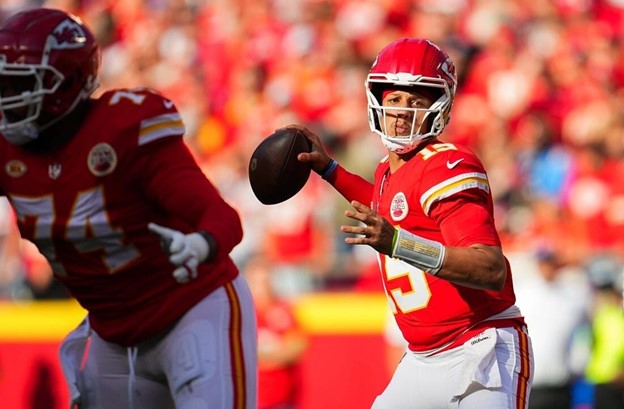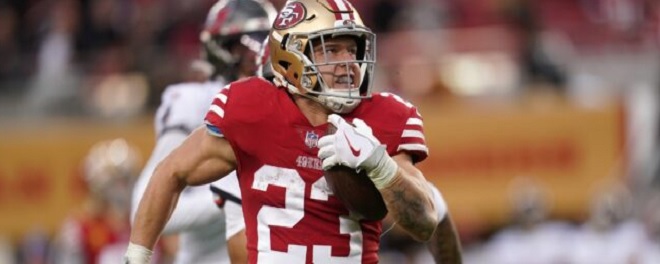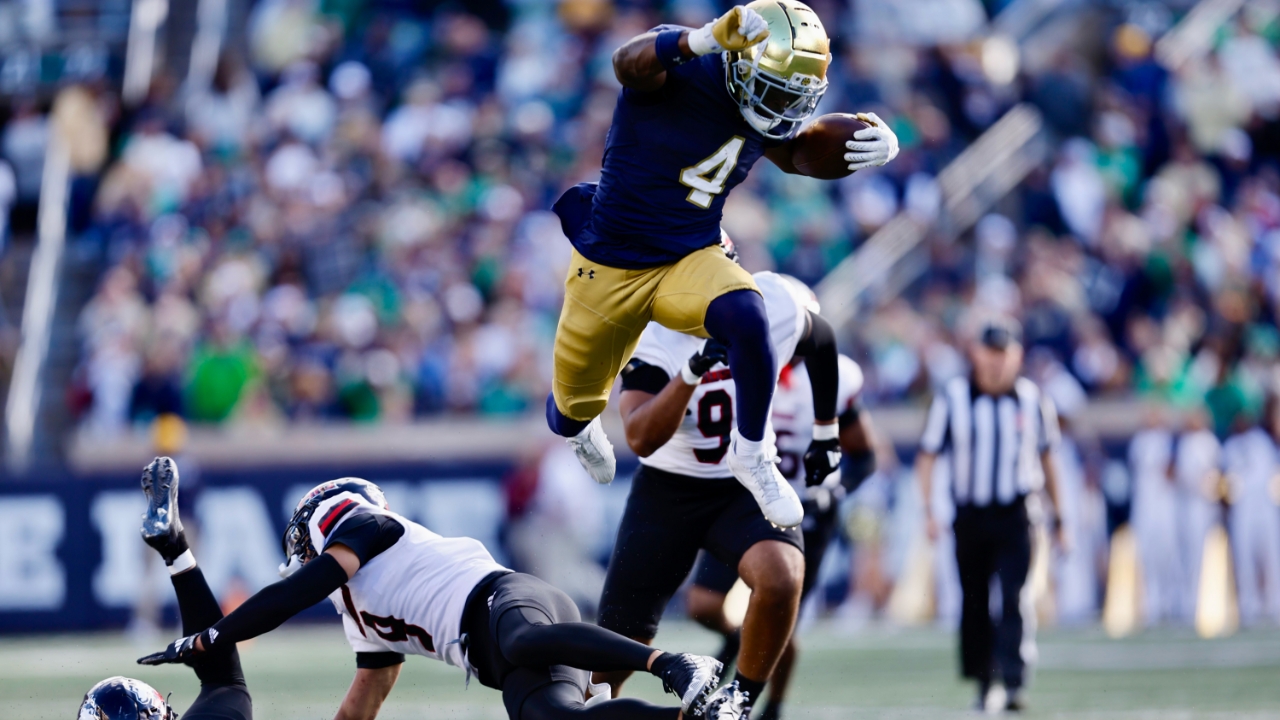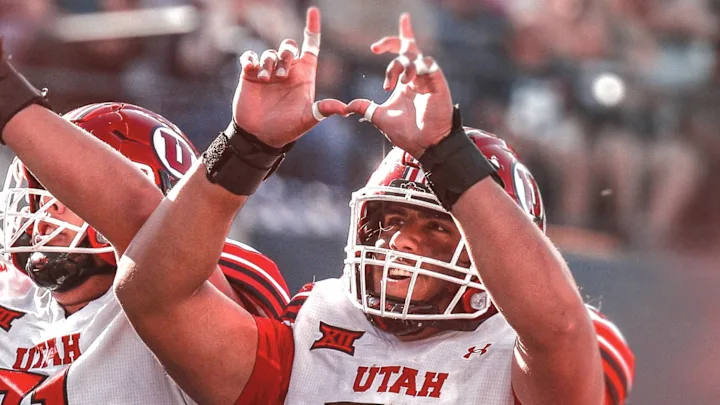Solid Starter
 Antoine Winfield Jr., S, Minnesota – Round 2
Antoine Winfield Jr., S, Minnesota – Round 2 
The Bucs have had issues in the secondary for a few years, but after spending a plethora of picks on cornerbacks, it looks like that position could be settled into a solid group going forward. Safety remained a problem area during 2019 because Justin Evans continues to suffer injuries. Mike Edwards and Winfield could help fix that, but both are similar undersized free safeties. At least between the two, Tampa Bay should have a future starter at the position.
Winfield is a dangerous pass-coverage playmaker who has good instincts and covers a lot of ground on the back end. Winfield is a true ballhawk who is a threat to create turnovers for his defense. He plays the ball well and shows very good field vision. He is a disciplined defender on the back end who doesn’t take false steps in coverage. With his speed, Winfield is a rangy safety who can get from the middle of the field to the sideline and is able to pick up speed receivers downfield.
Winfield is a willing tackler in the ground game and can dish out some hits that are surprising for a defender of his size. He shows nice technique as a tackler and wraps up ball-carriers. In the NFL, Winfield does not have the size to be the eighth man in the box and take on big backs. He should be a free safety who lines up downfield.
On top of being a potential starting safety, Winfield could be a core special teams player who also contributes as a returner.
Winfield only has to beat out Edwards to become a starter, so that is not a tall order. However given the injury issues with Justin Evans, Tampa Bay could be starting Edwards and Winfield together as soon as next season. Over time, I think Winfield could become a solid starter for the Bucs.
2019: Mike Edwards, S
2018: Vita Vea, DT
2017: Chris Godwin, WR
2016: Roberto Aquayo, K
2015: Ali Marpet, G/C
2014: Mike Evans, WR
2013: Akeem Spence, DT
Most Likely To Bust
 Ke’Shawn Vaughn, RB, Vanderbilt – Round 3
Ke’Shawn Vaughn, RB, Vanderbilt – Round 3 
Buccaneers general manager Jason Licht has had some real struggles in the early rounds of his NFL drafts. Vernon Hargreaves (2016) was a bust, Jameis Winston (2015) did not turn into the franchise quarterback he was drafted to be, and it appears that O.J. Howard (2017) could be on a different team soon. Licht’s second-round picks have been even worse. Tampa Bay decided to stick with and reward 2015 second-round pick left tackle Donovan Smith (2015), but Smith is a mediocre left tackle who struggles with good edge rushers. Other second-round picks from Licht include busts like kicker Ricky Aguayo (2016), edge rusher Noah Spence (2016), brittle safety Justin Evans (2017), tight end Austin Seferian-Jenkins (2015), and struggling running back Ronald Jones (2018). Thus, it would not be surprising if the Buccaneers have multiple selections of their 2020 early-rounders turn into busts.
There could be some bust potential with first-round pick Tristan Wirfs, who had some unsteady performances, notably against Michigan, and needs development. Some other teams thought Wirfs was a better athlete than football player and his best route to success in the NFL could be at guard. Other teams liked the tape with Antonie Winfield Jr., but 5-foot-9 safeties are at a real disadvantage and the majority are unable to overcome size mismatch issues – see Raiders first-round disappointment Karl Joseph. I ended up picking Vaughn as being the most likely to bust, but that was a tough choice because I really liked how hard he ran at Vanderbilt.
Vaughn because he also is undersized for the NFL at 5-foot-9, 205 pounds. In college, he displayed some serious strength through contact, flat out running over some defenders. However with bigger tacklers as a pro, that will be an issue. Vaughn is not overly powerful for the pro level, does not have devastating speed, and is not super elusive or a freaky athlete. I could see Vaughn topping out as a solid backup running back but not becoming a starter. Players with third-round grades are viewed as starting out as backups but developing into starters, and I think Vaughn could fall short of that.
2019: Sean Murphy-Bunting, CB
2018: Alex Cappa, G
2017: Justin Evans, S
2016: Noah Spence, DE
2015: Donovan Smith, OT
2014: Charles Sims, RB
2013: William Gholston, DE
Potential Boom Pick
 Tristan Wirfs, OT, Iowa – Round 1
Tristan Wirfs, OT, Iowa – Round 1 
The Bucs had a huge need at right tackle heading into the 2020 NFL Draft, and they were fortunate that one of the top four tackles fell within range for them to get a starter to protect Tom Brady. The 6-foot-5, 320-pound Wirfs has a great skill set with strength, athleticism, and a ton of upside to develop. At Iowa, he showed that he is raw and needs some development, but he has the tools to be an excellent offensive lineman.
Wirfs sets up pretty well as a pass blocker, but he definitely has some issues to clean up in pass protection for taking on NFL edge rushers. Wirfs has an inclination to bend at the waist at times. While he is quick out of his stance, he needs to get more depth in his kick slide to avoid reaching after speed rushers coming around the corner. Wirfs also needs to get better at counter moves to the inside, and not getting caught by surprise by bull rushes. Because of these issues, some felt that Wirfs should be a right tackle or guard in the NFL even though he has the physical talent to play left tackle.
In the ground game, Wirfs is a plus blocker who can generate movement at the point of attack. He plays with good leverage as a run blocker and sustains his blocks well. Wirfs says light on his hand to get out quick as a puller. His athleticism and quickness to move is seen with him as a puller, and that is an asset he brings to the Bucs. With his natural strength, Wirfs ties up defenders and is adept at fighting them out of their gaps. There are times when Wirfs overextends and ends up on the ground too often, but he is a capable run blocker entering the next level.
Wirfs is expected to come in and compete at right tackle for Tampa Bay. With his physical talent, Wirfs has the ability to become a really good NFL starter, and he has boom pick potential for the Buccaneers.
2019: Devin White, LB
2018: Ronald Jones, RB
2017: O.J. Howard, TE
2016: Vernon Hargreaves, CB
2015: Jameis Winston, QB
2014: Austin Seferian-Jenkins, TE
2013: Johnathan Banks, CB
Future Depth Player
 Tyler Johnson, WR, Minnesota – Round 5
Tyler Johnson, WR, Minnesota – Round 5 
Johnson was one of the best receivers in college football last year, so for the Bucs to land him in the fifth round was a steal for them. It would not surprise me if Johnson develops into a starting caliber outside receiver, but Tampa Bay has two excellent starters in Chris Godwin and Mike Evans, so it could be difficult for Johnson to become a starter with the Buccaneers. Johnson may not have the speed and separation skills to be a slot receiver, but he could rotate into the game on the outside with Godwin or Evans running some routes out of the slot. Even if Johnson doesn’t become a starter, I think he could be a very good depth receiver for Tampa Bay.
2019: Anthony Nelson, DE
2018: Justin Watson, WR
2017: Kendell Beckwith, LB
2016: Devante Bond, LB
2015: Kwon Alexander, LB
2014: Robert Herron, S
2013: Mike Glennon, QB
13. Tristan Wirfs, OT, Iowa – A+ Grade
Wow. I can’t believe the Buccaneers stole Tristan Wirfs. The Giants were very close to taking him – Dave Gettleman had him ranked higher than Andrew Thomas, but the coaches disagreed – so getting Wirfs at No. 13 is almost grand larceny. This is the perfect pick for the Buccaneers, who needed a big upgrade at right tackle to protect their 43-year-old quarterback.
45. Antoine Winfield, S, Minnesota – A Grade
A couple of years ago, the Buccaneers were widely criticized for passing on Derwin James in favor of Vita Vea. It turns out that Vea became a tremendous run defender for the Buccaneers, but James has been better for the Chargers, at least when healthy. However, the Buccaneers may have made amends for that mistake. Antoine Winfield is a tremendous play-maker who will pair with an improving cornerback group. He could’ve been chosen in the first round, so I love this value.
76. Ke’Shawn Vaughn, RB, Vanderbilt – B Grade
The Buccaneers finally get their running back. Ke’Shawn Vaughn runs with some nice power, and he makes sense as a third-round pick, but I’m not sure about the fit. Tom Brady wants running backs who catch passes out of the backfield very well. Vaughn can do that, but it’s definitely not his forte.
161. Tyler Johnson, WR, Minnesota – B+ Grade
Tyler Johnson seems like the sort of receiver Tom Brady likes playing with. Johnson is a solid route runner who should be able to eventually take over as the third receiver, replacing Breshad Perriman.
194. Khalil Davis, DT, Nebraska – B Grade
Khalil Davis was an excellent tester at the combine, so he put himself on the map. He has potential for sure, so I like this upside pick in the sixth round.
241. Chapelle Russell, LB, Temple – C- Grade
Normally, I’d say that a player coming off double ACL surgeries is someone who slipped in the draft, but Chapelle Russell isn’t even a good player. I don’t get this pick, but it’s the middle of the seventh round.
245. Raymond Calais, RB, Louisiana-Lafayette – C+ Grade
Raymond Calais made a name for himself at the combine by running one of the fastest 40s, but he’s a small running back (5-8, 188) who isn’t very skilled. I wouldn’t have drafted him, but he was at least in consideration.
2020 NFL Draft Team Grade: A . Follow Walter @walterfootball for updates.
Tampa Bay Bucs Season Preview
NFL Picks - Nov. 21
2026 NFL Mock Draft - Nov. 19
NFL Power Rankings - Nov. 17
Fantasy Football Rankings - Sept. 1




